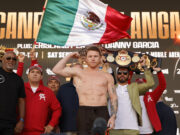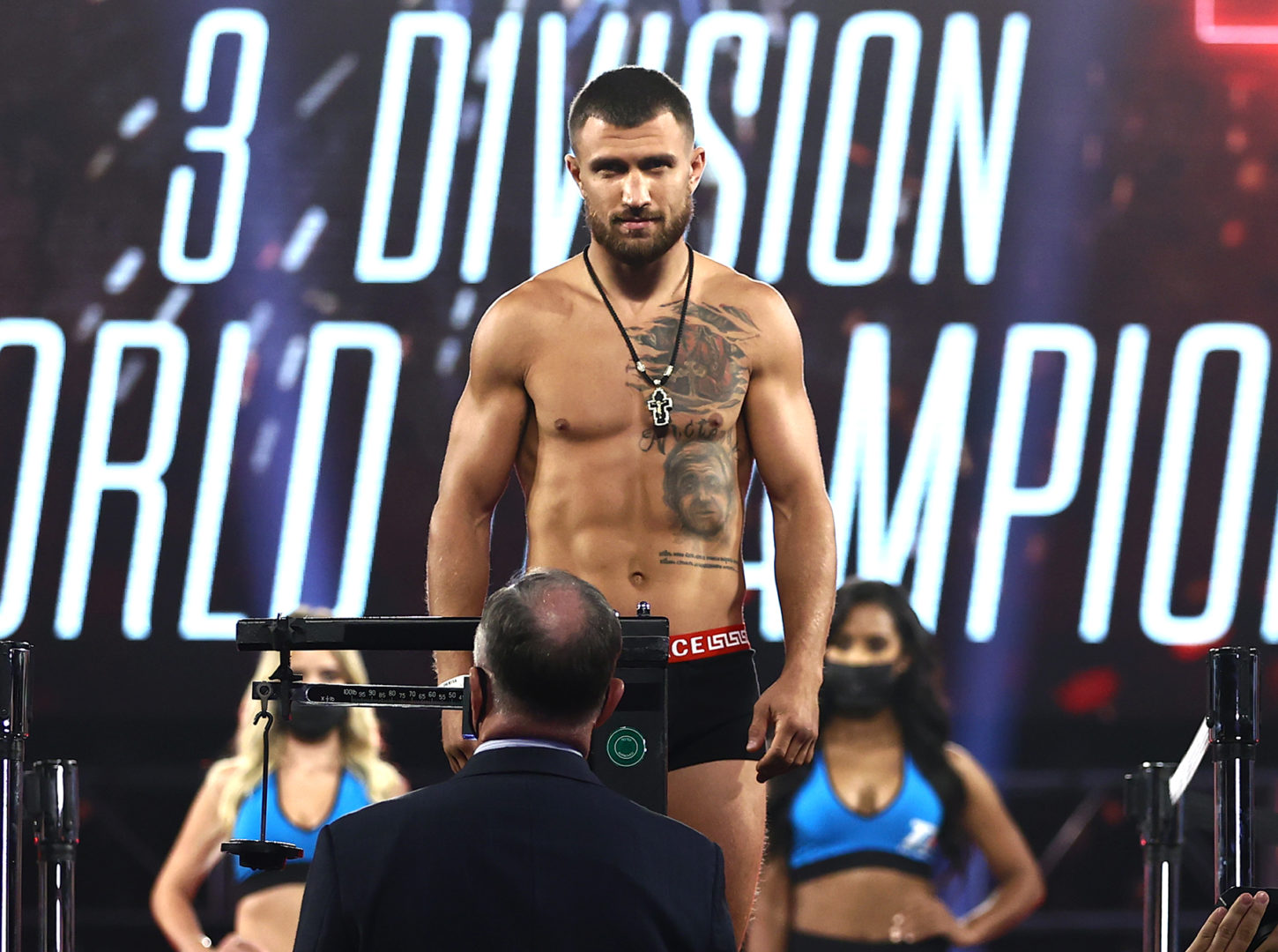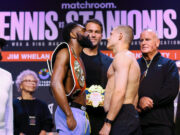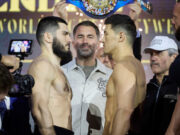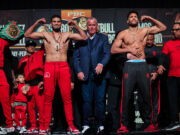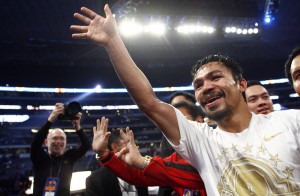
The Internet is atwitter with speculation about what Manny Pacquiao will do. Shane Mosley, Juan Manuel Marquez, Floyd Mayweather Jr., Filipino politics and more, much more, is out there, everywhere. There’s no way to know what will unfold. Even Pacquiao doesn’t know where he’ll be next. But here’s one place he should be:
On the cover of Sports Illustrated.
SI is scheduled to announce its coveted award, Sportsman of the Year, on Nov. 29. The nominees – retired Arizona Cardinals quarterback Kurt Warner, Canadian Olympic hero and Pittsburgh Penguins star Sidney Crosby – are worthy. But Pacquiao’s ascent from third-world streets to wealth, international celebrity and a seat in the Filipino Congress is singularly astonishing.
A year ago, this corner nominated him for the SI prize, as well as the Associated Press version, Male Athlete of the Year. Since then Pacquiao beat Joshua Clottey at Cowboys Stadium, won a Congressional seat, served on committees, authored legislation, trained and beat a much bigger man, Antonio Margarito, in what he called his toughest fight, also at Cowboys Stadium.
Last year, this nomination for the awards was an effort just to get his name into the mix. It belonged there then, although he was roundly snubbed. Derek Jeter, perhaps the most popular Yankee since Mickey Mantle, was SI’s choice. NASCAR’s Jimmie Johnson was the AP winner according to votes cast by sports editors, many of whom didn’t know how to spell Pacquiao’s name a year ago. I hope that’s changed, although I have my doubts about the boxing abolitionists among those newspaper editors, some of whom would vote for a spare tire before they’d vote for a boxer.
Pacquiao’s dynamic combo of skill, speed and energy has already put him alongside legends such as Henry Armstrong, Roberto Duran and Sugar Ray Leonard, the SI winner in 1981. After his stunning dominance of Margarito Saturday, Bob Arum said Pacquiao was the best fighter he has ever promoted in his rich career, which includes Leonard and Muhammad Ali. I’m not sure about that one and I may never be, because the defining fight, Pacquiao-Mayweather, might never happen.
But Pacquiao has put himself into the argument. That’s enough to ensure his place in a debate that is as current as it is ancient. That said, Pacquiao’s evolution as fighter is just one reason he was the best of 2010. There is a fundamental goodness about him, and it revealed itself once again late in the devastating decision over Margarito.
Margarito, who suffered a fractured orbital bone beneath his right eye, was hanging onto nothing more than his pride after nine rounds. In the 11th, Pacquiao looked back at referee Laurence Cole as if to say it’s time to stop this.
In a cruel business, Pacquiao was worried about his opponent, whose apparent mocking of trainer Freddie Roach’s Parkinson’s in a controversial video had prompted some ringside ghouls to urge the Filipino to exact revenge with a sustained beating. But that’s not Pacquiao. There is a genuine concern for even a dangerous rival, whom Pacquiao said hurt him in the sixth. After his victory, Pacquiao conceded that he backed off, pulled his punches, because he didn’t want to do any more damage.
In Ali – history’s greatest for a Baby Boom generation that grew up watching him, there was a streak of cruelty displayed in his punishing attack in 1967 of Ernie Terrell, who had mockingly called him by his birth name, Cassius Clay. What’s my name, what’s my name? Ali asked again and again, punctuating the question with cutting combinations. Against Joe Frazier, Ali expressed his cruelty with trash talk that portrayed the proud Frazier as an Uncle Tom.
In the ring and at news conferences, Pacquiao has done neither. After victories over Erik Morales, Marco Antonio Barrera and Marquez, the media started calling him “The Mexican Assassin.’’ Pacquiao said, please, don’t call me that. He knows about assassinations. He has seen them in The Philippines. Assassins wage war and murder. Reporters and headline writers needed Pacquiao to remind them that boxing isn’t either one. It’s a sport.
Against Margarito, there was no vengeance against a heavy-handed puncher who appeared to mock his beloved trainer. In September, there was a racist rant in a video posted by Mayweather, who called him a “little yellow chump.’’ Pacquiao did not respond in kind or even in anger.
A few months ago, I was skeptical of Pacquiao’s comments that he only wanted to help his people. It sounded like a cliched load of more political bull from another candidate on the campaign trail. But against Margarito, his gesture of concern told me he really means it. Naive? Perhaps. Politics might corrupt Pacquiao in ways that boxing never could.
But I have this memory of him from 2005 before a loss, his last one, to Morales at the MGM Grand in Las Vegas. Roach talked about how Pacquiao slept on the floor while training at home in the Philippines. Growing up, he often slept on the streets.
At the comfortable MGM, Roach said he entered Pacquiao’s room and saw that the bed was still made. He saw Pacquiao curled up in a corner, sleeping on the floor. I’m not sure he sleeps on any floors anymore. But I am sure he hasn’t forgotten it or the people who are still there, either. For 10 rounds of sustained fury against Margarito followed by two more marked by concern for a beaten business partner, Pacquiao showed that his generosity is as genuine as his punching power.
He cares.
SI and the AP should too.
Photo by Chris Farina / Top Rank





